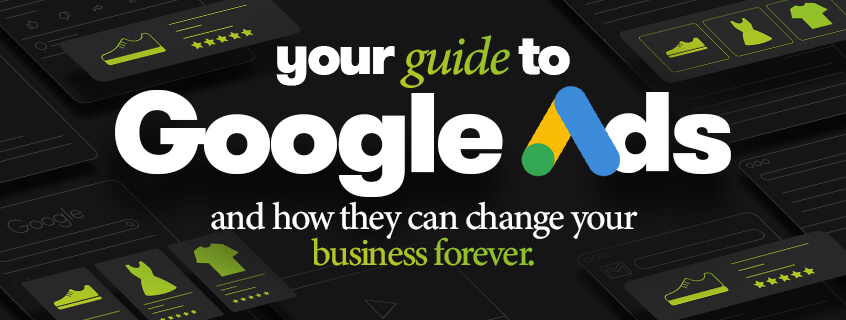

So you’ve heard about google ads and you’re here to see what all the fuss is about.
Essentially, Google ads work on a pay-per-click basis. And with over 63,000 of these clicks every single second on any given day, your potential target market just grew big time.
With these kinds of numbers, the potential growth for businesses is astronomical.
But you’re probably also thinking: will Google ads work for small businesses? Short answer, absolutely.
But really, it’s a little more complex than a simple “yes, just sign up and find out”. Here’s how these ads work, and why a strategy is so important when it comes to raking in those leads.
Instead of paying for advertising that you hope will work, Google ads allow you to pay only when it does work. Basically, you’ll only ever pay for actual real-life engagements by your audience, wherever or whenever that may be. Here’s how Google does this.
Google ads appear all over the internet. That’s what makes them so dangerously effective. More specifically though, Google ads appear across all of the major Google networks, namely:
Here are some real-world examples:
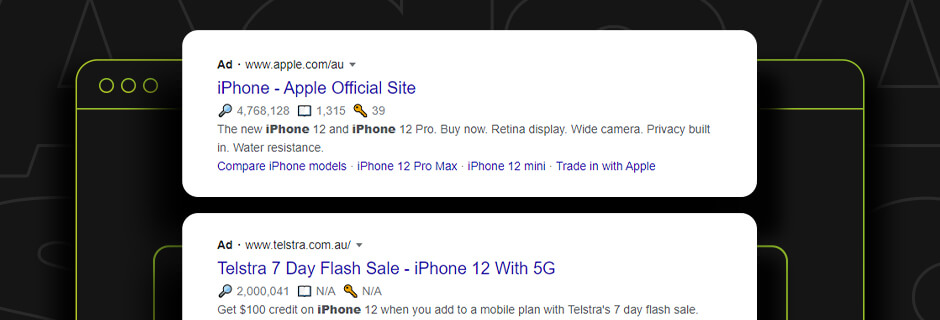
Try googling any product - iPhones, furniture - anything. The top few results (highlighted below) are all Google ads. Now imagine your product or service appearing at the top of the search results page. Everyone typing in exactly what they wanted would instantly be presented with your ad. If you’ve got the ad wording right - these search ads can drive serious traffic.
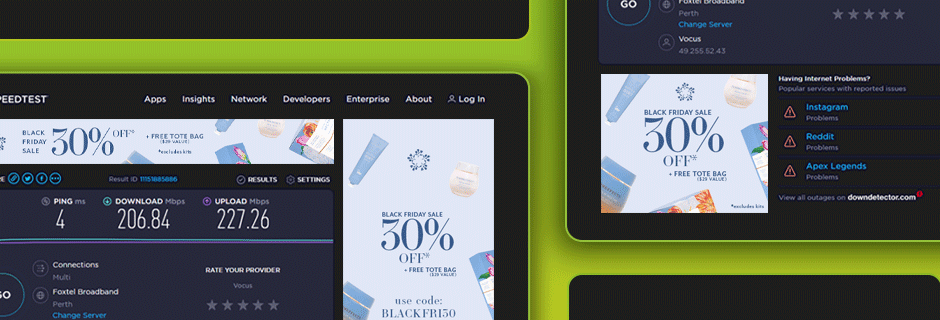
If your product or service is easily marketed visually, this is the way to go. Google’s growing army of websites using display ads is feeding multiple audiences in different industries. Check out an example from a site below - ads can appear between website content, around a page’s periphery and more, getting many impressions as people scroll through content. Display ads appear in more locations than SERP ads and target the passive buyer, who may not be looking for your product specifically, but on seeing your ad are now more aware and potentially more eager to purchase.
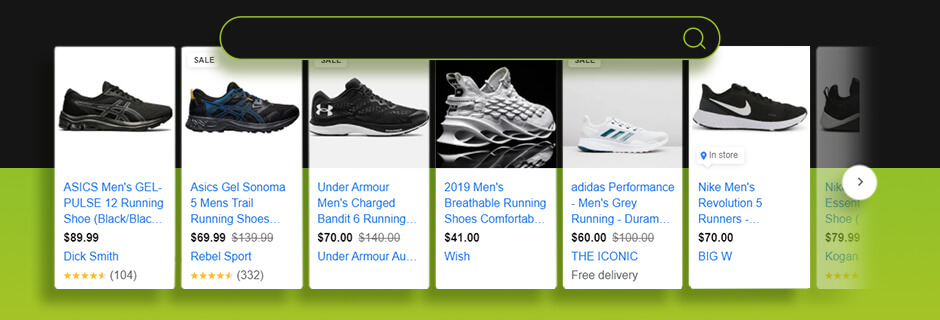
If you’re running a product-based business, Google shopping ads can be a powerful tool to snap up new customers who are already coming in with buying intent. As you can see below, Google shopping ads help already interested customers decide by placing shopping ads above the organic content.
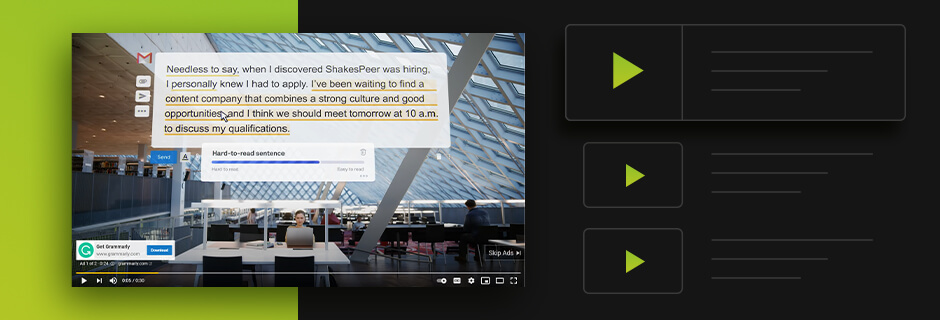
For businesses chasing enormous reach and awareness, Youtube ads can be a goldmine. A well-crafted story with quality content is a recipe for success in this department. YouTube ads have become so common that it’s almost weird when a video doesn’t have an ad at the start. Here’s one at the beginning of a video of Gordon Ramsey and Jeremy Clarkson cooking lobster on a beach.
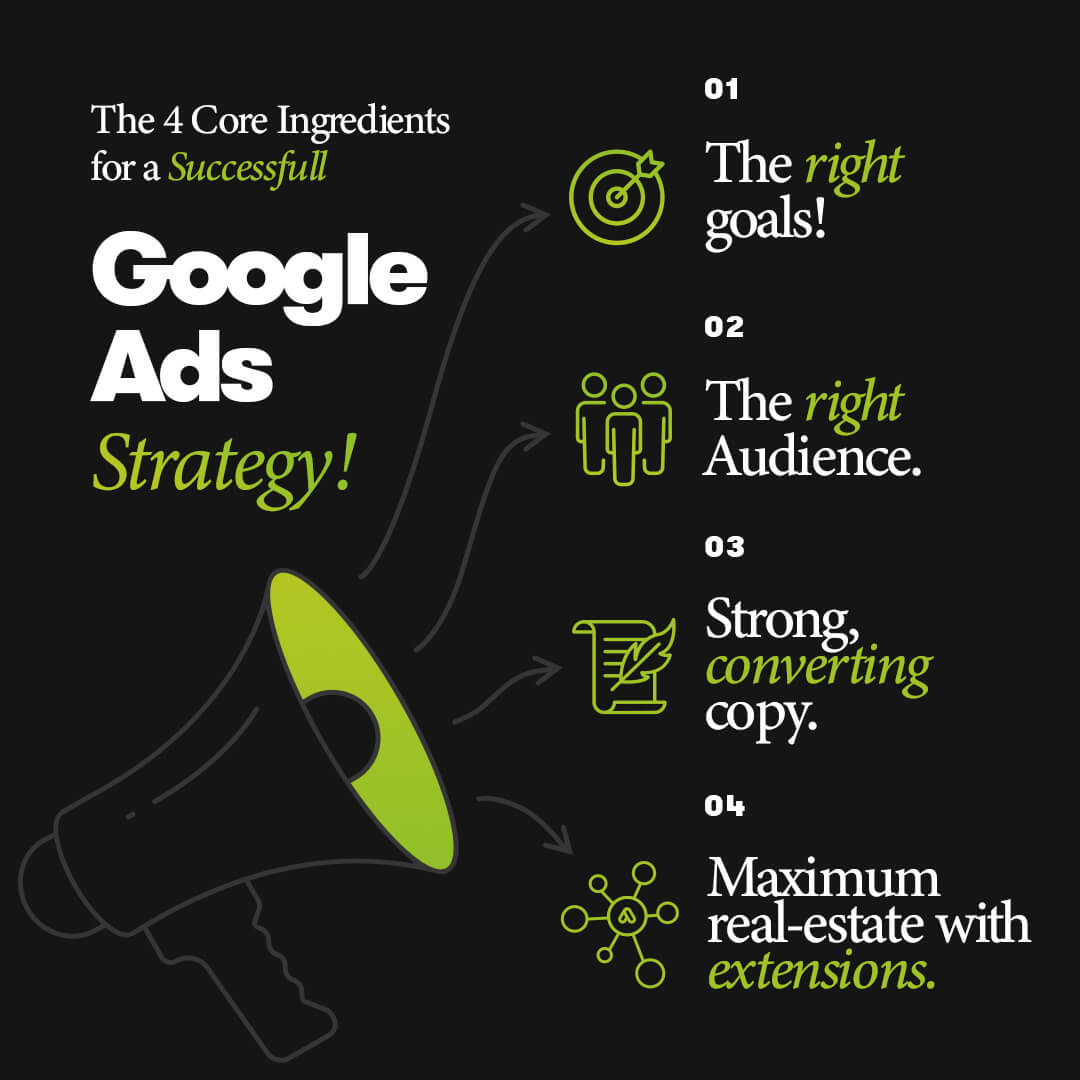
There are a few ingredients that go into making a successful Google ads campaign. You can throw all the money you want at a campaign and have little to no engagement, let alone actual customer conversions. In the end, it comes down to your strategy.
Here’s what we mean by that.
Getting set up with a winning Google ads strategy starts with the basics - your end goal. This will depend on what you’re selling, and who your customers are. For example if you’re creating an online homewares store and want to build brand awareness for a completely new product line - display ads will be a great choice for you. If you’re hoping to snap up buyers with custom intent - a quality SERP campaign will suffice.
Your audience is out there, and they’re clicking every day. But getting them to click on your ad and start spending will depend on the location and language targeting settings. Choose the location of your target audience - the people who normally buy your product and those who are likely to - display ads for plumbing services on a kids video game site won’t exactly be the right match, but throw your ad into the right pool of potential customers - that’s where the magic happens.
Writing good ad copy is the essence of a good Google ads campaign. Without it, you’re flailing in uncertain waters with nothing to hold on to. Good ad copy should be, besides being spelled correctly:
Ad extensions can be powerful tools for businesses that actually have customers who benefit from using them. For example, an emergency plumbing service would benefit from having a call extension, allowing a customer to bypass the landing page and directly contact the company. This wouldn't be so applicable if you’re an online luxury fashion store for example, where you at least want to see what you’re buying before you settle.
Before you get carried away - it’s important to understand the metrics. There are some essential Google ads metrics that you should be aware of:
To determine what type of campaign you want to have and what goals you want to set, you need to identify the metrics that make sense for your business. For example, if you’re wanting to drive traffic, you would want to pay attention to the CTR but if you’re aiming to increase purchases, it’s important to pay attention to the number of conversions you’re getting.
It helps to have the basics down, especially if you’re new to Google ads. Basically, it comes down to getting these things right:
Making the leap into the world of Google ads is scary. But the thing to remember is you’re not necessarily laying down cold hard cash for nothing. You’ll only be paying for actual engagements by your audience.
Anyone can set up a Google ads account and launch a campaign, but tracking, monitoring, and adapting it to a particular audience takes experience, dedication, and time.
That’s where we can help.
At Dilate Digital, we aren’t Google Premier Partners for no reason. We’re your guide to google ads. Our PPC specialists work to design, post, track and deliver your Adwords campaign so you can focus on the big picture and your product or service.
If you're ready to scale up your small business, give us a bell at or send an enquiry today.
what our clients are saying
create business. better everyday.
Let's Talklearn from the best minds in the business
Bodie provides some insight into Dilate's internal operations. How we approach what we do, and how we strive to be Better Everyday.





